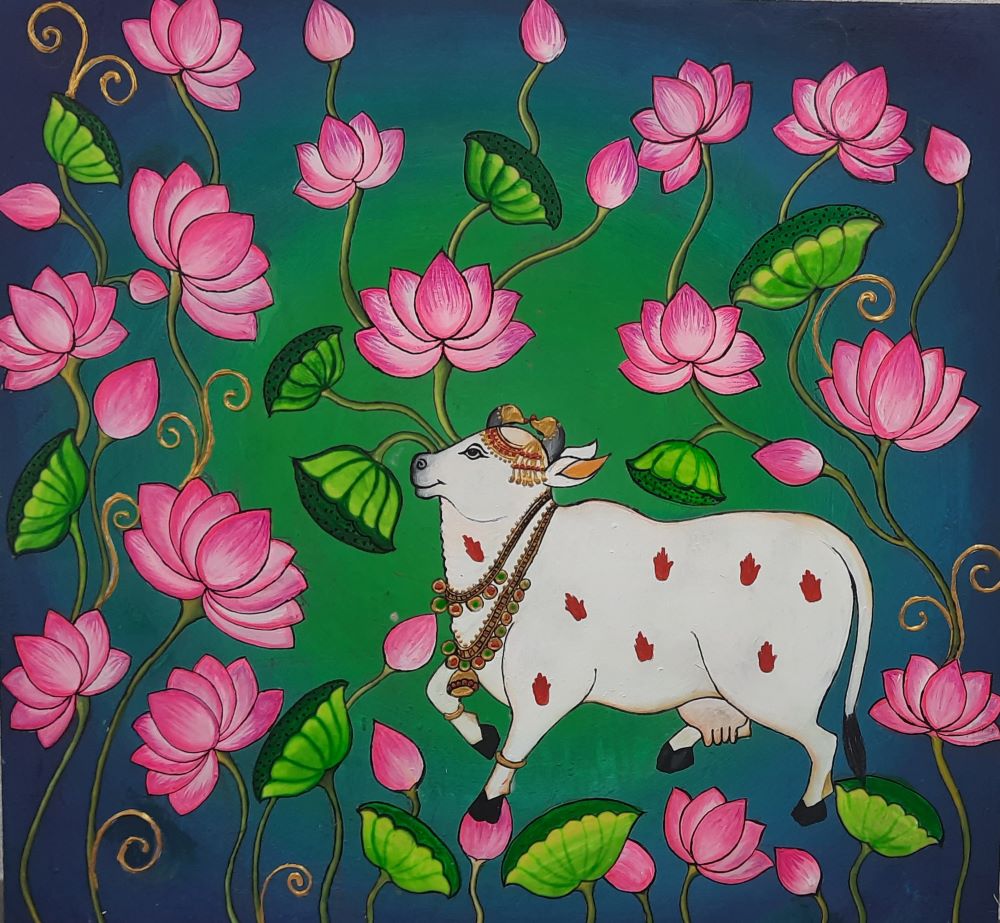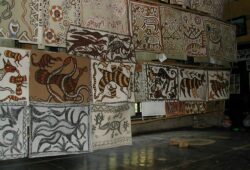Pichwai Art: A Colorful Tapestry of Devotion and Tradition
 Posted On
Posted On
Pichwai art, a traditional form of Indian painting, has a rich history that dates back centuries. Originating in the holy town of Nathdwara, Rajasthan, Pichwai art is deeply rooted in devotion and spirituality. This article explores the intricate world of Pichwai art, its history, techniques, symbolism, and cultural significance.
Historical Background
Pichwai, which translates to “behind the idol,” refers to the exquisite paintings that adorn the walls of temples dedicated to Lord Krishna, particularly in the Shrinathji temple of Nathdwara. These artworks serve as vibrant backdrops for the deity’s idol and are an integral part of the temple’s rituals and festivities.
Pichwai art finds its roots in the 15th century when the deity Shrinathji was moved from Vrindavan to Nathdwara to protect it from Mughal invasions. Local artists began creating these intricate paintings to celebrate and depict the life and leelas (divine acts) of Lord Krishna.
Techniques and Materials
Pichwai artists employ a combination of traditional techniques and materials to create their stunning artworks. These paintings are typically done on large pieces of fabric, often silk or cotton, using a fine brush made from squirrel hair. The colors used are primarily natural pigments derived from minerals, vegetables, and even precious stones. Gold and silver foils are often added to enhance the richness and opulence of the artwork.
The Process
Creating a Pichwai painting is a labor-intensive process that requires immense skill and precision. The artists first sketch the outline of the composition with charcoal. Then, they meticulously fill in the details using vibrant colors. The most intricate part of the process is the application of gold and silver leaf, which is done with great care to give the painting its signature radiance.
Symbolism and Themes
Pichwai paintings are laden with symbolism and are often centered around the life and stories of Lord Krishna. Common themes include the raslila (Krishna’s divine dance with the gopis), Govardhan puja (lifting of the Govardhan Hill), and various other leelas. Each element in a Pichwai painting holds a specific symbolic meaning, from the peacocks representing Krishna to the lotus flowers symbolizing purity and divine love.
Cultural Significance
Pichwai art has a profound cultural and religious significance in India. These paintings play a crucial role in the devotional practices of Vaishnavism, a sect of Hinduism that worships Lord Vishnu as the supreme deity. Devotees believe that the intricate and vibrant Pichwai paintings enhance their connection with the divine and create a sacred atmosphere in temples.
Furthermore, Pichwai art is not limited to religious contexts. Over the years, it has gained recognition as a unique and exquisite form of traditional Indian art. Collectors, art enthusiasts, and tourists from around the world are drawn to its beauty and craftsmanship.
Preservation and Revival
In recent years, efforts have been made to preserve and revive Pichwai art. Traditional artisans are passing down their skills to the younger generation to ensure the continuity of this art form. Additionally, contemporary artists are exploring new ways to incorporate Pichwai techniques into modern art, keeping the tradition alive while adapting it to contemporary sensibilities.
Conclusion
Pichwai art is a testament to the enduring power of tradition and spirituality in Indian culture. Its intricate details, vibrant colors, and deep symbolism continue to captivate and inspire people around the world. Whether as a form of devotion or as an expression of artistic excellence, Pichwai art remains a colorful tapestry that weaves together the threads of history, religion, and artistry. As long as there is a reverence for Lord Krishna and a love for exquisite art, Pichwai paintings will continue to flourish and enchant generations to come.



